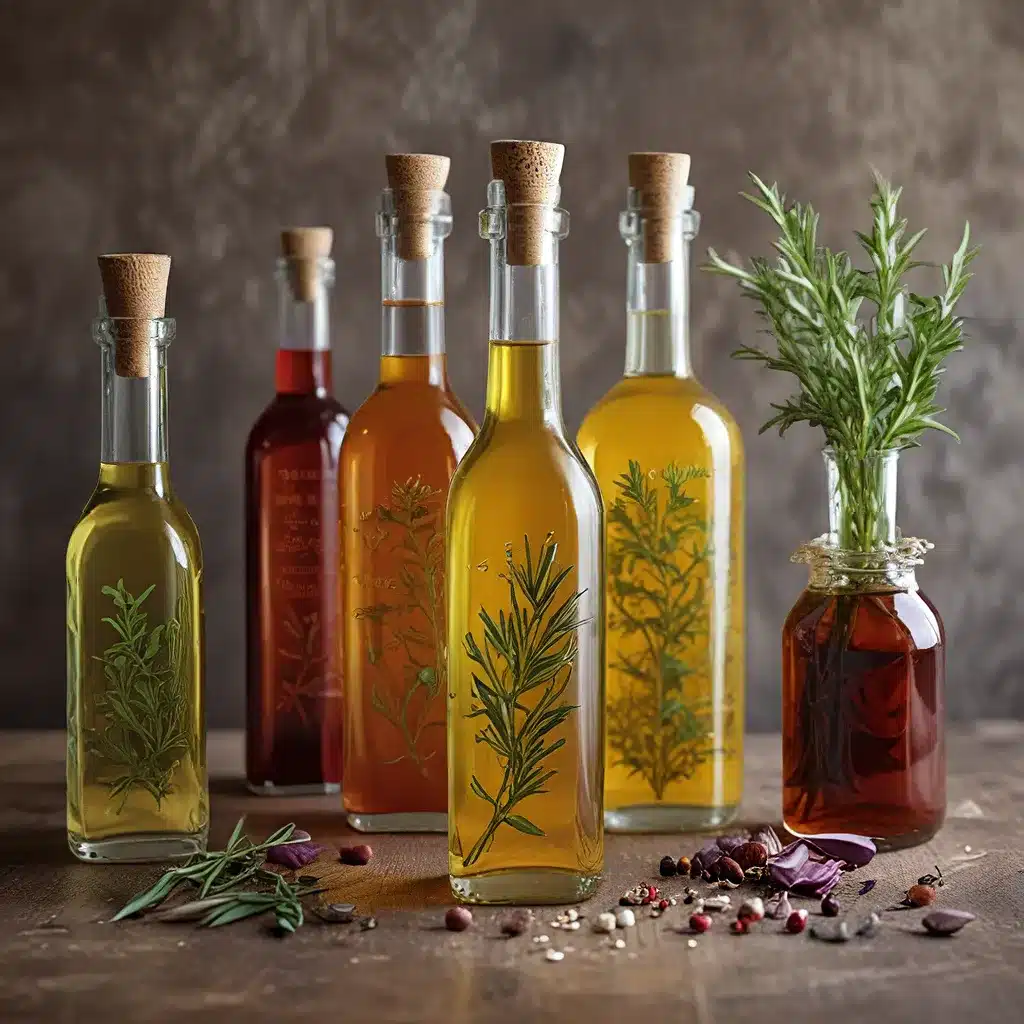
As a chef and lifelong forager, I’ve always been enamored with the art of food preservation. From drying acorns for winter storage to fermenting grapes into wine, the ability to capture nature’s bounty and enjoy it long after the seasons have changed has been a fascination of mine. Over the years, I’ve become particularly fond of one preservation method in particular: vinegar infusions.
The Versatility of Vinegar Extracts
Vinegar’s acidic properties make it a culinary powerhouse for preserving and enhancing a wide variety of ingredients. Unlike alcohol-based tinctures, which can sometimes feel out of place in everyday cooking, vinegar extracts seamlessly integrate into my daily meal preparations. Whether I’m whipping up a vibrant salad dressing, marinating proteins, or adding a splash of flavor to soups and sauces, these homemade vinegar infusions are a constant go-to in my kitchen.
What I love most about making my own vinegar extracts is how easy and rewarding the process can be. With just a little bit of hands-off effort and patience, I’m able to create delicious, customized flavor profiles that I can enjoy for months to come. And the best part? The possibilities are endless – from fragrant herbs to juicy fruits, the seasonal bounty in my region dictates what goes into my vinegar creations.
Choosing the Right Vinegar
Not all vinegars are created equal, and the specific variety you choose can have a significant impact on the final flavor of your infusion. As with any culinary endeavor, a bit of thoughtfulness in pairing your vinegar with the right ingredients is key.
For example, I find that balsamic vinegar pairs beautifully with herbs like tarragon, rosemary, and basil, while rice wine vinegar can extract a stunning color from plums. On the other hand, apple cider vinegar tends to be a more versatile all-rounder, imparting a complementary flavor to a wide array of fruits and botanicals.
When selecting a vinegar, I always look for one with an acidity level of around 5%. Some vinegars will naturally be at this concentration, while others may need to be diluted with water to reach the ideal balance. Personally, I prefer working with organic, traditionally-prepared vinegars that still retain their beneficial bacterial cultures, like raw apple cider vinegar with the mother.
Choosing Your Ingredients
Just as the vinegar itself plays a crucial role, the ingredients you choose to infuse can make or break your final product. While the options are truly limitless, I tend to gravitate towards fresh or dried herbs and fruits as the stars of my vinegar extracts.
Over the years, I’ve experimented with a wide variety of ingredients, from fragrant strawberries, sage, and garlic to more unexpected options like elderberries, mulberries, and horsetail. The key is to pay attention to the moisture content of your chosen ingredients – fresh herbs should be washed and thoroughly patted dry to avoid diluting the vinegar, while dried botanicals with tougher coverings may benefit from a quick heat treatment to enhance the extraction process.
The Infusion Methods
When it comes to actually making your vinegar infusions, there are a couple of different approaches you can take, each with its own unique advantages.
The first method involves heating the vinegar and then pouring it over your chosen ingredients. This approach can be particularly effective for extracting flavors from dried herbs or tougher plant materials. However, I personally prefer the second method, which involves simply combining the unheated vinegar and herbs or fruits. This helps preserve the beneficial bacterial cultures present in my beloved raw apple cider vinegar.
Regardless of which method you choose, the general process is quite straightforward. For fresh ingredients, I find a ratio of 2 parts vinegar to 1 part herbs or fruit works best, while dried botanicals usually only require a few tablespoons per pint jar. Once your ingredients are combined, it’s just a matter of letting the mixture steep and infuse for several weeks, with the occasional skimming of any SCOBY-like formations that may arise.
Enjoying Your Homemade Infusions
The beauty of these homemade vinegar extracts is their versatility in the kitchen. They can be seamlessly substituted for any unflavored vinegar, elevating everything from salad dressings and marinades to sauces and soups with their unique and vibrant flavors.
And for the herbalists in the crowd, these vinegar infusions can also serve as the foundation for a variety of other beneficial products. A touch of honey can transform them into delightful oxymels, while they also make the perfect base for refreshing drinking vinegars (aka shrubs).
Regardless of how you choose to use them, one thing is certain – these flavorful vinegar infusions are a game-changer in the kitchen. They allow me to capture the essence of the seasons and enjoy their bounty well into the colder months, all while elevating my culinary creations in delightfully unexpected ways.
So, what are you waiting for? Grab a jar, some fresh or dried ingredients, and let your creativity run wild. Who knows – you might just discover your new signature flavor. Bon appétit!

